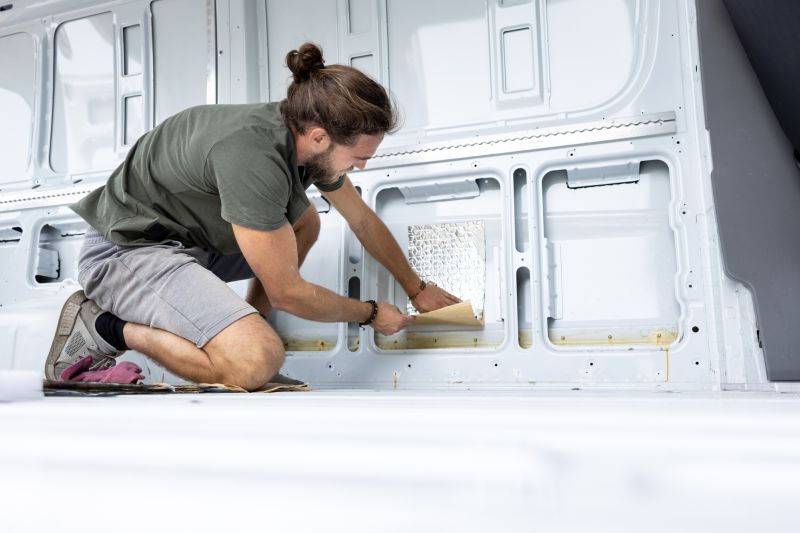Popular Fiberglass Repair Products For Seamless Restoration
Explore the most sought-after tools and materials that ensure smooth, professional-quality fiberglass repairs every time.
 Fiberglass repairs are common in various applications, from boat hulls and automotive panels to recreational equipment and household fixtures. Successfully restoring fiberglass surfaces requires the right combination of products designed to bond, fill, and reinforce damaged areas. Whether dealing with small cracks or large holes, selecting appropriate repair materials ensures durability and a seamless finish. Understanding the different types of repair products available can help users make informed decisions tailored to their specific needs.
Fiberglass repairs are common in various applications, from boat hulls and automotive panels to recreational equipment and household fixtures. Successfully restoring fiberglass surfaces requires the right combination of products designed to bond, fill, and reinforce damaged areas. Whether dealing with small cracks or large holes, selecting appropriate repair materials ensures durability and a seamless finish. Understanding the different types of repair products available can help users make informed decisions tailored to their specific needs.
Top Overall Option
Universal Fiberglass Repair Kit
A comprehensive fiberglass repair kit that includes resin, hardener, various fillers, and application tools. Designed to accommodate a wide range of repair needs, it provides all-in-one convenience for both small fixes and larger restoration projects. Its versatile formulation ensures compatibility with different fiberglass surfaces, making it a popular choice among DIY enthusiasts and professionals alike.
Types of Products For Fiberglass Repairs
Epoxy Resin
A durable, strong adhesive used for bonding and filling cracks, suitable for structural repairs.
Polyester Resin
A common resin for repairs that offers good adhesion and ease of use for small to medium projects.
Fiberglass Cloth
Reinforcement material used to strengthen repairs and rebuild surfaces.
Fiberglass Mat
A woven mat that provides added strength and stability for large repairs.
Repair Putty
A quick-setting filler ideal for small cracks and surface imperfections.
Gel Coat
A finishing layer that provides a smooth, glossy surface finish after repairs.
Bonding Adhesive
Specialized glue for attaching broken pieces or patches securely.
Microballoons
Lightweight filler used to fill small holes and smooth surfaces.
Resin Applicator Brushes
Tools for applying resins and coatings evenly over surfaces.
Sandpaper and Abrasives
Various grits used to prepare surfaces and smooth finished repairs.
Reinforcement Tape
Flexible tapes for reinforcing large or structural repairs.
Primer
Prepares the surface for finishing coats and improves adhesion.
Finishing Compound
Smooths and polishes surfaces after repairs for a seamless appearance.
Cleaning Solvent
Removes grease, dirt, and contaminants before applying repair products.
Protective Gear
Gloves, masks, and eye protection to ensure safety during repairs.
Popular Choices
Widely used for its strong bonding capabilities and versatility in different repair scenarios.
A common choice for small to medium repairs, offering ease of application.
Popular for quick fixes and surface smoothing, suitable for DIY projects.
Effective reinforcement for rebuilding damaged areas.
Often used to achieve a glossy, durable surface after repairs.
Lightweight filler for filling small holes and surface imperfections.
Flexible tapes for strengthening large or structural repairs.
Prepares surfaces for finishing layers, improving adhesion.
Variety of grits for surface preparation and finishing touches.
Strong adhesive for attaching broken parts or patches securely.
Essential for surface preparation before applying repair products.
Safety gear to handle chemicals and abrasive materials safely.
Fiberglass repair products typically include resins, fillers, adhesives, and finishing compounds. Epoxy and polyester resins are popular choices for their strong bonding qualities and versatility. Fillers such as microballoons or fiberglass cloth are used to fill gaps and rebuild structural integrity. Adhesives are essential for bonding broken pieces or attaching patches, while surface primers and finishing compounds help achieve a smooth, professional appearance.
Proper preparation is crucial before applying any repair product. Cleaning the damaged area thoroughly, removing any loose debris, and roughening the surface can enhance adhesion. Applying the correct product in the right manner, following manufacturer instructions, results in a more durable repair. Additionally, safety precautions like wearing gloves and working in well-ventilated areas should always be observed to ensure a safe repair process.
Choosing the right products depends on the extent of the damage, the type of fiberglass, and the environment in which the repaired item will be used. From small cracks to large structural repairs, a wide range of products is available to suit various needs. Understanding the features and specifications of each product type can help users achieve the best possible outcome for their fiberglass repair projects.
Key Buying Considerations
- Type of damage and extent of repair needed
- Compatibility of resin with existing fiberglass material
- Ease of application and drying time
- Strength and durability of the repair product
- Surface finish requirements post-repair
- Environmental conditions where the item will be used
- Availability of reinforcement materials like cloth or tape
- Safety features and protective gear included or recommended
- Shelf life and storage conditions of the products
- Compatibility with other repair components being used
- User skill level and experience with fiberglass repairs
- Cost and value for the scope of the project
- Manufacturer instructions and support resources
- Flexibility of the repair material for movement or stress
- Resistance to water, UV, or chemicals if applicable
